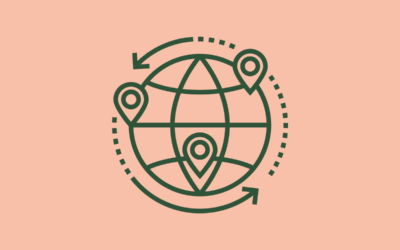Table of Contents
Would you go for a hike through the woods without a map? Sure, you might be fine – or you might get completely lost, and perhaps even eaten by a bear. The same is true for your website’s SEO strategy (minus the bear), which is why we recommend you check out the concept of keyword mapping.
What is keyword mapping? This is an effective SEO technique that involves identifying specific SEO keywords and then working out which page on your website is best for them. It sounds complicated – but it’s easier than you might think!
Here’s everything you need to know about keyword mapping, so that your website doesn’t get lost in the overgrown forest that is the internet.
Does keyword mapping help SEO?
Keyword mapping and SEO go together like bacon and eggs. You can be successful at SEO without using keyword mapping, but it definitely gives you some advantages.
With keyword mapping, you have an overarching plan of attack for your SEO. It helps you identify missing keywords on your site, keeps you organised, improves your internal linking, and makes sure you’re not duplicating keywords and content on multiple pages, which can be bad for SEO.
How to keyword map
Ready to try it out? Awesome – let’s run down keyword mapping in a nutshell. The best way to track everything is via a spreadsheet, identifying each URL on your website and which keywords you want to track on that page.
1. Work out which keywords your site currently ranks for on Google
Identify which keywords your site’s pages are already ranking for by using Google Analytics. Track all of this on your spreadsheet, including each page’s URL and H1, the primary keyword your site is ranking for, and your secondary keywords.

Just like a geographical map, keyword mapping will point in the right direction for your SEO strategy.
2. Use a keyword research tool to identify your gaps
Now, time for keyword research. No matter which keyword research tool you use, do a deep dive to find more keywords related to your topic. You can note these new keywords on a new spreadsheet.
3. Assign the new keywords to a page on your website
It’s now time to map! Looking at all of your new keywords, decide which ones should go on which page of your website, based on what you’re already ranking for and areas where you’d like to improve.
Make sure each page is optimised for unique keywords, though, as you don’t want to cannibalise your SEO rankings by targeting the same keyword on different pages.
Don’t have enough content for all of your awesome new keywords? In this case, the new keywords are an opportunity to create new content – either new website pages or blog posts.
Make a note to come back to your keyword map every few months to update, see what’s ranking well, and regularly look for additional keywords you can target within your keyword strategy.
We know this process probably seems a little daunting! And it’s totally not essential, as some SEO is always better than none. But if you want to track keywords and boost your SEO, then keyword mapping is the way to go. Now that you know more about what keyword URL mapping is and how it all works, we encourage you to try it out for yourself (keeping a close eye out for massive furry animals).
Or, you can join the Pepper Club and let us do all the dirty work for you for a whole year!
SEO Cannibalisation: Should I Target The Same Keyword On Different Pages And Blog Posts?
Centre image by Denise Jans on Unsplash
Featured image by GeoJango Maps on Unsplash





